8 Futuristic Glimpses From Cisco's Umi Telepresence Launch
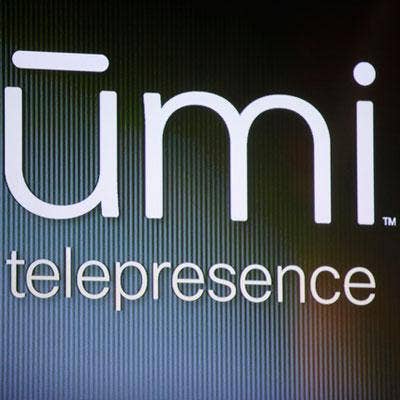
Umi Telepresence Is Finally Here
After nearly two years of rumors and speculation, Cisco has unveiled Umi Telepresence, the consumer-oriented version of its business video collaboration technology that uses a mix of hardware, software and cloud services to bring real-time video collaboration to the living room. CRN was on hand at the Oct. 6 launch in San Francisco, and here we offer some scenes from the event.
All photos by Kim Kulish.
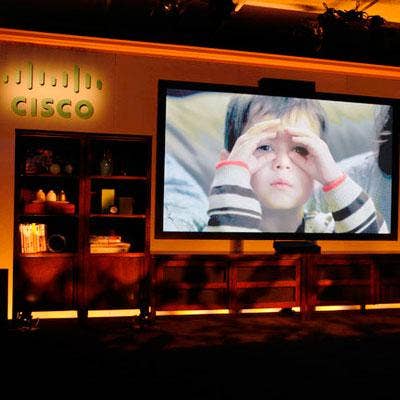
Video, The Next Major Market Transition
Video collaboration technology has come a long way since the postage stamp-size video windows people have used in the past to stay in touch. Cisco's Umi Telepresence is one example of how the future is going to be a dramatically different place for this little fella than it is today, at least when it comes to staying in touch with far-flung friends and relatives.

Cisco's Umi Telepresence Curtain-Lifter
Cisco CEO John Chambers was unable to attend the Umi Telepresence launch event, but Marthin De Beer, senior vice president of Cisco's Emerging Technologies Group (ETG) was there to explain why telepresence is a technology that isn't just for business collaboration.
"People only use this technology if the experience is good enough. The experience we created is very specific to the consumer," De Beer said at the event.
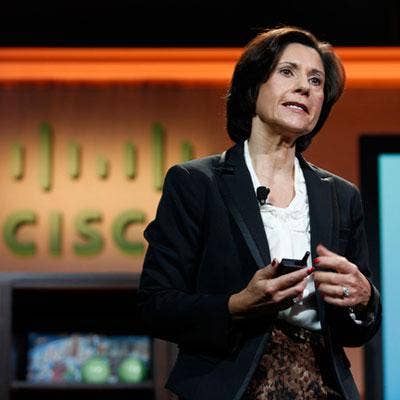
The Design Considerations Behind Umi
Umi Telepresence works with existing high definition TVs, but Cisco took care to make the user interface as unobtrusive as possible, Gina Clark, vice president and general manager for Umi Telepresence, said at the event.
Cisco also paid close attention to the privacy implications of Umi Telepresence and has included several features to allow users to control when and how they collaborate, Clark said. "This was like letting someone in your living room," she said.
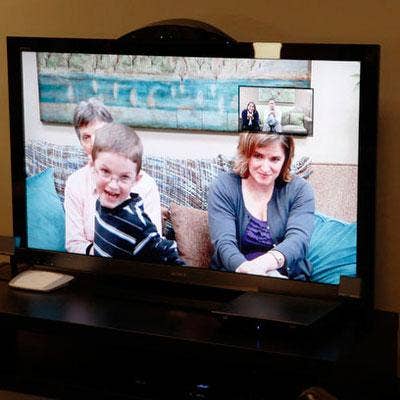
Every HDTV's A Stage
With Umi, families can bridge the divide of distance and catch up on all the latest scuttlebutt. Kids love Umi because, well, kids pretty much everywhere can't get enough of seeing themselves on video, now can they? And the high definition aspect of Umi Telepresence brings the experience to life in a way that can't be duplicate in the smaller screen PC world.
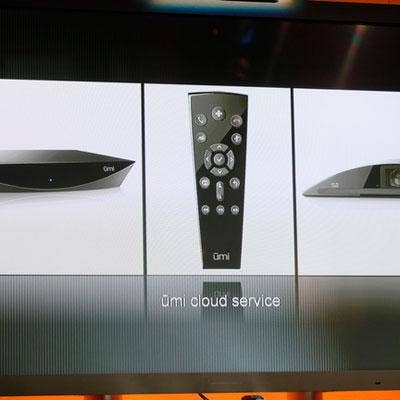
The Hardware The Powers Umi Telepresence
Umi Telepresence consists of a telepresence camera that sits on top of the HDTV (right), a set-top box that connects to the Internet either wired or wirelessly (left), and a small remote control (center). All video is stored in the cloud through Umi Cloud Services, which also delivers a range of Web-enabled features.
Umi Telepresence is priced at $599 with a $24.99 monthly subscription that includes unlimited video calling, storage and messaging. It's available now for pre-order and will become generally available on Nov. 14.

Telepresence Experience That's Tailor-Made For Consumers
Cisco's De Beer emphasized that Umi Telepresence isn't just a re-packaging of Cisco's business telepresence product for the consumer market. Cisco's Emerging Technologies Group (ETG) built Umi Telepresence from the ground up, enlisting the aid of experts in the consumer market, he said.
Umi puts Cisco into direct competition with Skype and other consumer-oriented Web videoconferencing companies, as well as other networking giants that have been eyeing this space with no small amount of enthusiasm.
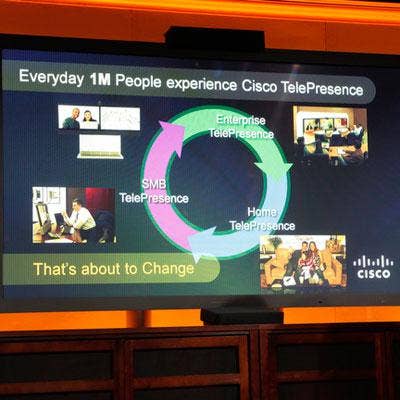
Cisco Telepresence Poised For Explosive Growth
Cisco says one million people use its telepresence technology each day. But if the networking giant succeeds in building a consumer telepresence business, that number will skyrocket.
Umi Telepresence isn't cheap -- at $599 with a $24.99 subscription, it's priced out of the reach of at least a significant portion of the consumer market. However, Cisco's view is that once people try Umi Telepresence, they'll be hooked, and the company will show off the product at malls nationwide in the coming months in order to generate buzz.

Palpable Enthusiasm
An audience of roughly 100 media members attended the Umi Telepresence launch, and many used video technology from companies other than Cisco to create their own video record of the event.